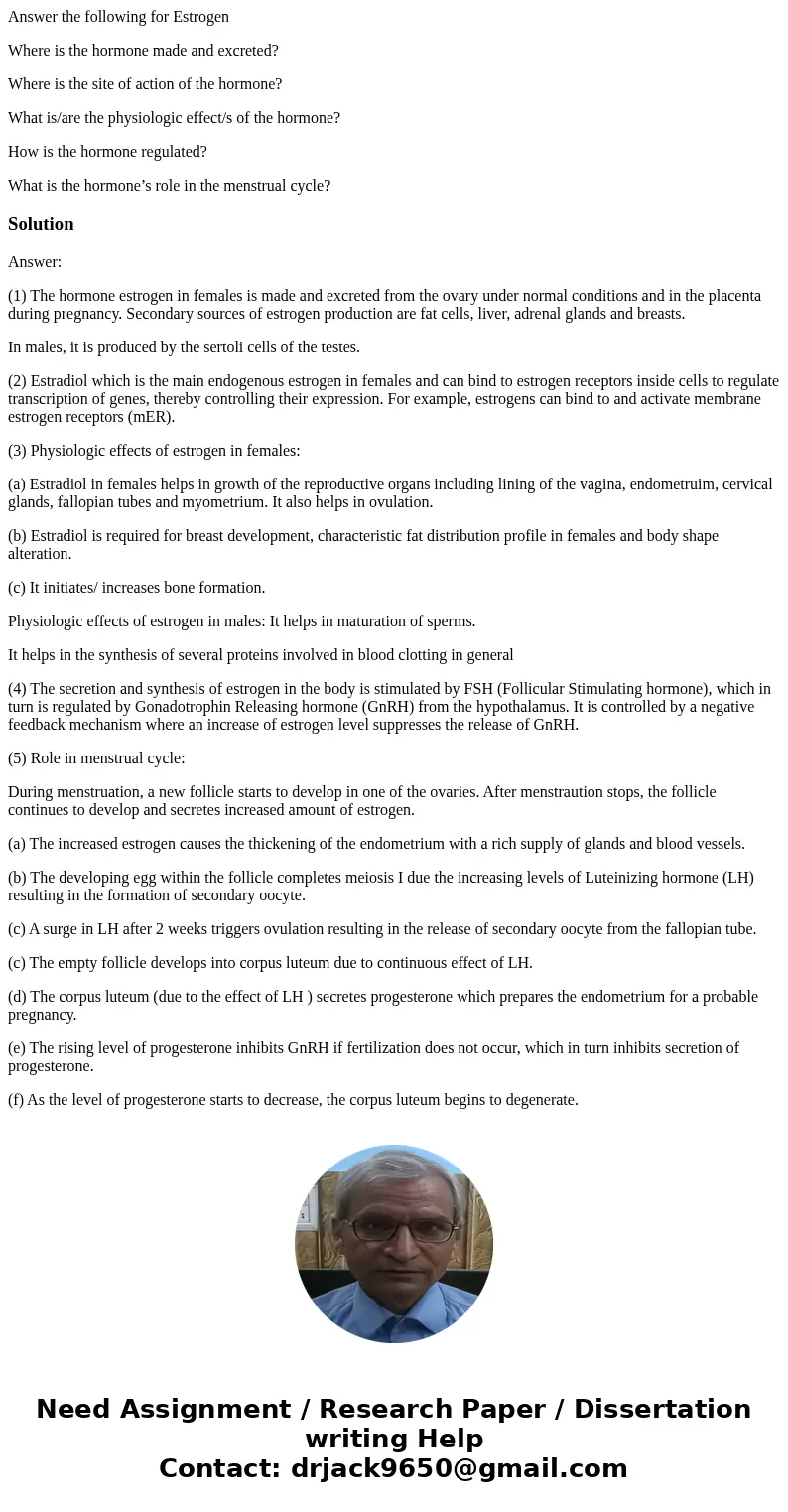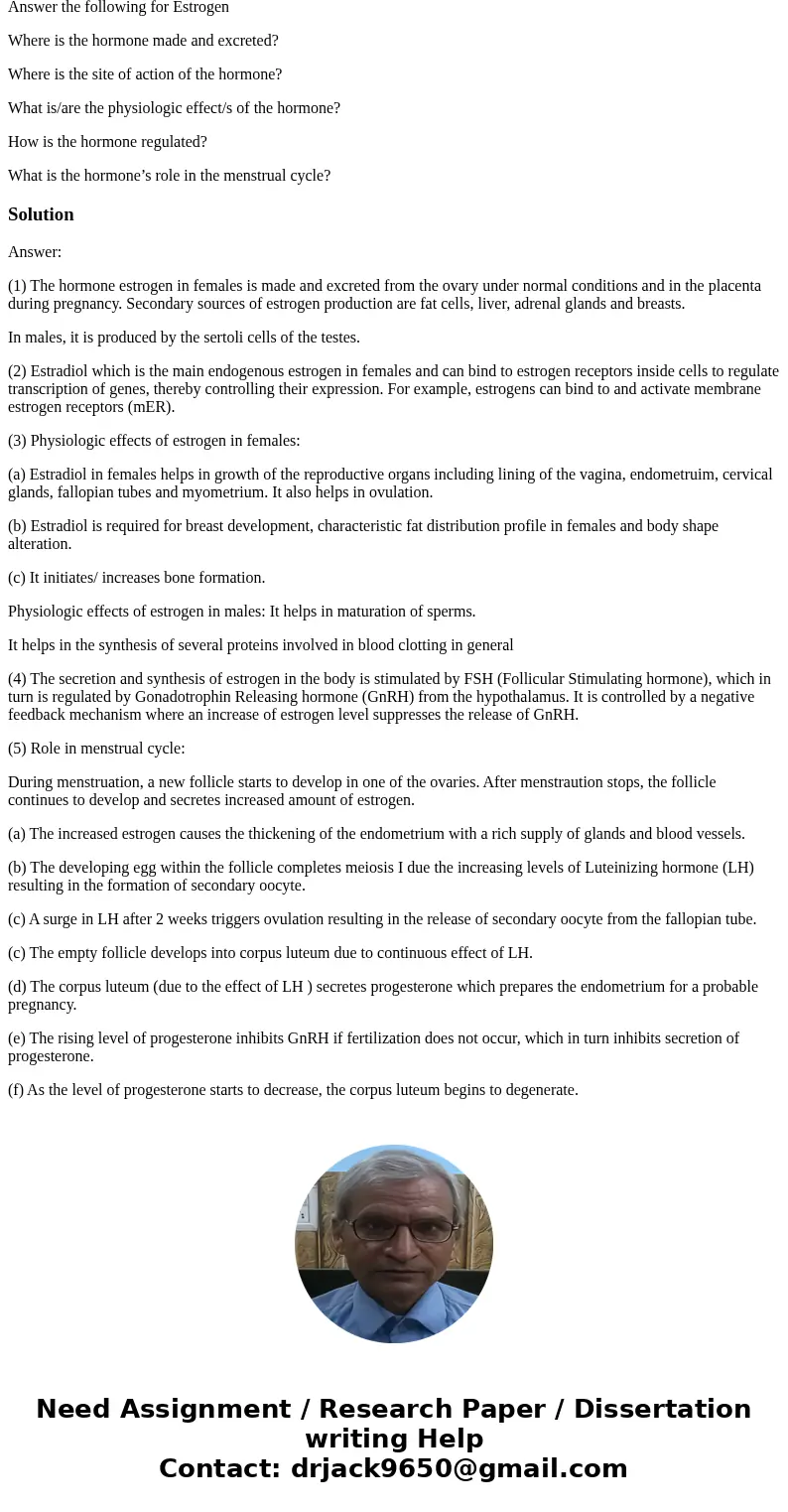Answer the following for Estrogen Where is the hormone made
Answer the following for Estrogen
Where is the hormone made and excreted?
Where is the site of action of the hormone?
What is/are the physiologic effect/s of the hormone?
How is the hormone regulated?
What is the hormone’s role in the menstrual cycle?
Solution
Answer:
(1) The hormone estrogen in females is made and excreted from the ovary under normal conditions and in the placenta during pregnancy. Secondary sources of estrogen production are fat cells, liver, adrenal glands and breasts.
In males, it is produced by the sertoli cells of the testes.
(2) Estradiol which is the main endogenous estrogen in females and can bind to estrogen receptors inside cells to regulate transcription of genes, thereby controlling their expression. For example, estrogens can bind to and activate membrane estrogen receptors (mER).
(3) Physiologic effects of estrogen in females:
(a) Estradiol in females helps in growth of the reproductive organs including lining of the vagina, endometruim, cervical glands, fallopian tubes and myometrium. It also helps in ovulation.
(b) Estradiol is required for breast development, characteristic fat distribution profile in females and body shape alteration.
(c) It initiates/ increases bone formation.
Physiologic effects of estrogen in males: It helps in maturation of sperms.
It helps in the synthesis of several proteins involved in blood clotting in general
(4) The secretion and synthesis of estrogen in the body is stimulated by FSH (Follicular Stimulating hormone), which in turn is regulated by Gonadotrophin Releasing hormone (GnRH) from the hypothalamus. It is controlled by a negative feedback mechanism where an increase of estrogen level suppresses the release of GnRH.
(5) Role in menstrual cycle:
During menstruation, a new follicle starts to develop in one of the ovaries. After menstraution stops, the follicle continues to develop and secretes increased amount of estrogen.
(a) The increased estrogen causes the thickening of the endometrium with a rich supply of glands and blood vessels.
(b) The developing egg within the follicle completes meiosis I due the increasing levels of Luteinizing hormone (LH) resulting in the formation of secondary oocyte.
(c) A surge in LH after 2 weeks triggers ovulation resulting in the release of secondary oocyte from the fallopian tube.
(c) The empty follicle develops into corpus luteum due to continuous effect of LH.
(d) The corpus luteum (due to the effect of LH ) secretes progesterone which prepares the endometrium for a probable pregnancy.
(e) The rising level of progesterone inhibits GnRH if fertilization does not occur, which in turn inhibits secretion of progesterone.
(f) As the level of progesterone starts to decrease, the corpus luteum begins to degenerate.


 Homework Sourse
Homework Sourse